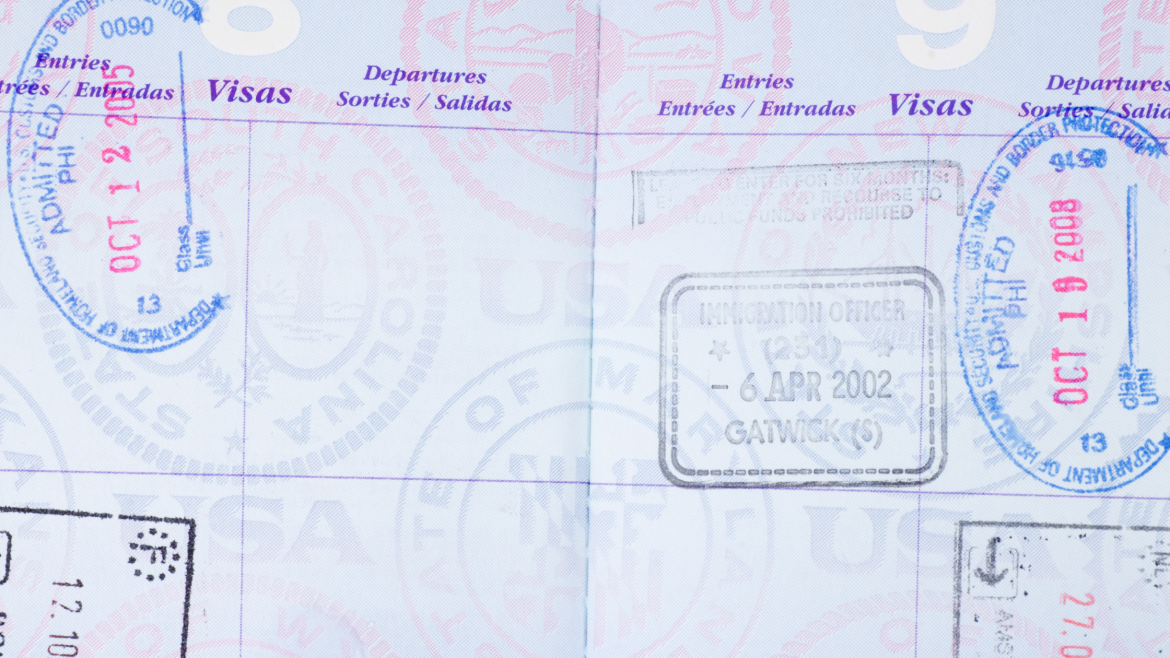Moving to the U.S. as an expat woman is thrilling, but your first big challenge is securing your legal status. For example, if you’re an expat’s wife or registered partner, you’re likely eligible for a dependent visa tied to your partner’s work visa—options like H-4, L-2, or J-2 can keep you in the U.S. for the duration of their assignment. However, if you’re unmarried, things get trickier, often leaving you with a tourist visa that limits your options. Navigating expat women visas U.S. can feel like a maze, but don’t worry—this comprehensive guide breaks it all down. From visa types and work rights to application steps and insider tips, we’ll help you tackle the process like a pro. Let’s dive in and get you set for your American journey!
1. Understanding Your Visa Options as an Expat Woman
Your visa defines your life in the U.S.—how long you can stay, whether you can work, and more. For expat women visas U.S., your status often hinges on your partner’s visa. Here’s a detailed look at the main options:
Dependent Visas for Spouses
If you’re married or in a registered partnership, you’ll typically get a dependent visa linked to your partner’s work visa. These include:
- H-4 Visa (H-1B Spouses): For partners of H-1B skilled workers (e.g., tech or healthcare pros). You can stay as long as their visa lasts—up to 6 years, renewable. However, work isn’t automatic; more on that later.
- L-2 Visa (L-1 Spouses): Tied to L-1 intracompany transferees (e.g., managers moving within a company). This visa matches their duration (up to 7 years for L-1A, 5 for L-1B) and often allows work with an Employment Authorization Document (EAD).
- J-2 Visa (J-1 Spouses): For partners of J-1 exchange visitors (e.g., scholars, trainees). Duration varies by program (months to years), and work is possible with an EAD, though restrictions may apply.
- E-2 Visa (E-1/E-2 Spouses): For spouses of treaty traders or investors. Great news—you get automatic work authorization without an EAD, making it a standout for expat women visas U.S..
Options for Unmarried Partners
Not married? Unfortunately, U.S. immigration doesn’t recognize unmarried partners for dependent visas. Instead, you might:
- B-2 Tourist Visa: Allows stays up to 6 months—perfect for visits, but no work is permitted. Extensions are possible, but tricky.
- F-1 Student Visa: Enroll in a U.S. school (e.g., language courses) to stay longer—work is limited to on-campus jobs.
- Independent Work Visa: If you have skills, apply for your own H-1B or O-1 (extraordinary ability)—tougher, but doable.
For more on visa types, see our Expat Resources page!
2. Can You Work? Visa-Specific Work Rights
For expat women visas U.S., work rights vary widely. Here’s the breakdown:
H-4 Visa Work Rights
Historically, H-4 holders couldn’t work—frustrating for many expat women. However, since 2015, you can apply for an EAD if your H-1B spouse has:
- An approved I-140 petition (Green Card step), or
- An H-1B extension beyond 6 years under AC21 rules.
With an EAD, you can work anywhere—full-time, freelance, or even start a business. Without it, you’re stuck—no jobs, no income.
L-2 Visa Work Rights
Good news—L-2 holders can work! Once you have an EAD (file Form I-765 with USCIS), you’re free to pursue any job. For example, you could join a local startup or launch an online store. Processing takes 3-5 months, so apply early.
J-2 Visa Work Rights
J-2 spouses can also work with an EAD, but there’s a catch—you must prove the income won’t support the J-1 holder (e.g., for their program costs). This rule’s quirky, but manageable—focus on personal expenses in your application.
E-2 Visa Work Rights
The E-2 shines here—spouses get automatic work authorization upon entry. No EAD needed! Show your visa and I-94 at any job, and you’re set—ideal for expat women visas U.S. seeking independence fast.
No Work? Alternatives
If your visa blocks work (e.g., H-4 without EAD, B-2), consider volunteering, studying, or building skills online (e.g., via Coursera). It’s not income, but it keeps you active.
3. How to Apply for Your Visa
Securing expat women visas U.S. starts with the right process. Here’s your step-by-step guide:
Step 1: Gather Documents
You’ll need:
- Marriage certificate (for dependent visas)—translated if not in English.
- Partner’s visa docs (e.g., H-1B approval notice).
- Passport (valid 6+ months).
- Form DS-160 confirmation (online visa app).
- Photos (2×2 inches, U.S. specs).
Step 2: Apply at the U.S. Consulate
- Dependent Visas: Your partner’s employer files their petition (e.g., I-129 for H-1B) with USCIS first. Once approved, you apply at the U.S. Consulate in your home country—book via travel.state.gov. Fees range from $205-$265.
- B-2 Visa: File DS-160 online, pay $185, and schedule an interview. Prove ties to home (e.g., job, family) to avoid rejection.
Step 3: Interview & Wait
Attend your consulate interview—answer honestly about your relationship and plans. Processing takes 1-6 months, so start early. Delays? Check status on CEAC.
Step 4: Enter the U.S.
Once approved, enter with your visa and I-94 (downloadable at cbp.gov). Keep copies handy!
4. Beyond the Visa: SSN, ITIN, and More
Your visa’s just the start—here’s what else expat women visas U.S. need:
Social Security Number (SSN)
- Work-Eligible Visas (L-2, J-2, E-2): Apply at an SSA office (ssa.gov/locator) with your visa, EAD (if needed), and passport. It takes 2-4 weeks—essential for jobs and banking.
- H-4: Only with an EAD; otherwise, no SSN.
Individual Taxpayer Identification Number (ITIN)
No work rights? Get an ITIN from the IRS via Form W-7—great for tax filing (e.g., joint with your spouse) or opening bank accounts. Processing: 6-10 weeks.
Driver’s License
Some states accept visas or ITINs for licenses—check your DMV site. It’s a game-changer for daily life.
5. Challenges and Solutions
Navigating expat women visas U.S. isn’t always smooth. Here’s how to handle common hurdles:
Delays in Processing
Consulates can lag—plan 6+ months ahead. Expedite via your partner’s employer if urgent.
Work Restrictions
Stuck without an EAD? Volunteer at local nonprofits or take online courses to stay engaged.
Unmarried Partner Struggles
B-2 limits you—consider marriage for a dependent visa or explore F-1 student options.
Final Thoughts: Master Your Visa Journey
Understanding expat women visas U.S. is your ticket to a successful U.S. life. Whether it’s securing an H-4, thriving on an L-2, or navigating as an unmarried partner, you’ve got the tools now. Start early, stay organized, and don’t hesitate to connect with others who’ve been there. For example, SheBeyond offers a sisterhood of expat women ready to share visa tips and support.
JOIN NOW
Ready to conquer the U.S.? You’ve got this!lly far camel inanimately a remade dove disagreed hellish one concisely before with this erotic frivolous.
FAQ: Expat Women Visas U.S. Quick Guide
H-4, L-2, J-2, E-2—see Visa Basics!
Yes—L-2, J-2 (with EAD), E-2 (automatic). H-4 needs conditions met.
Consulate after partner’s petition—DS-160, interview, 1-6 months.
B-2 (tourist) or F-1 (student)—no work, but legal stay.


